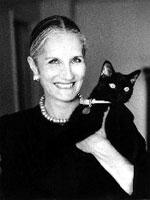Benita Eisler
Writer
I can map my life using as coordinates the libraries I've used: from the dust hovering in the air of the children's room in my New York City branch library; the smell of freshly waxed linoleum in the too-small library of my girls' school (no books that hadn't been assigned at least for "Summer Reading" on the shelves). The Smith College Library introduced me to the first professional librarians I'd ever known, more ingenious in linking bibliographies than any Internet search engine will every be. (The infamous alternative uses of the Browsing Room's comfy couches became the Dean's favorite topic for fire-and-brimstone talks!) Finally, there were the Piranesi-like reaches of Harvard's Widener, where the stacks devoted to French literature were only to be reached by catwalks high above any visible terra firma.
Only the Society Library has ever seemed truly mine. How I found it is lost to my aging memory. But forty years ago, just after my baby daughter could be left with a sitter, I would race down 79th Street. Listing with the weight of what was then considered a "portable" typewriter and the uncut pages of the French book I was to translate, I headed for the large study room, home of the great Littre dictionary. The revelation of borrowing privileges and the pleasures of the Members' Room with its magazines came later (unlike college days, sleeping seems to be the only alternative to reading here).
In the last two decades, I've spent most of my working life in the Library; in the course of researching and writing six books, I've witnessed its change from a charming, clubby enclave to a professionally administered institution, where such services as Interlibrary Loan and online resources make it increasingly unnecessary to leave the building. New titles appear instantly; extraordinary treasures, long out of print, routinely turn up on the shelves when, as the case requires, they are reclaimed as rare books. Evening lectures, conversations, and concerts have made the Library a more vibrant place. In the course of these gradual changes, the membership, too, has changed—now it is younger, less stereotypically Upper East Side, with more working researchers and writers. More astonishingly, these transformations have left the spirit unchanged: warm and welcoming, a refuge and a hideout, and, thankfully, a little eccentric still.

